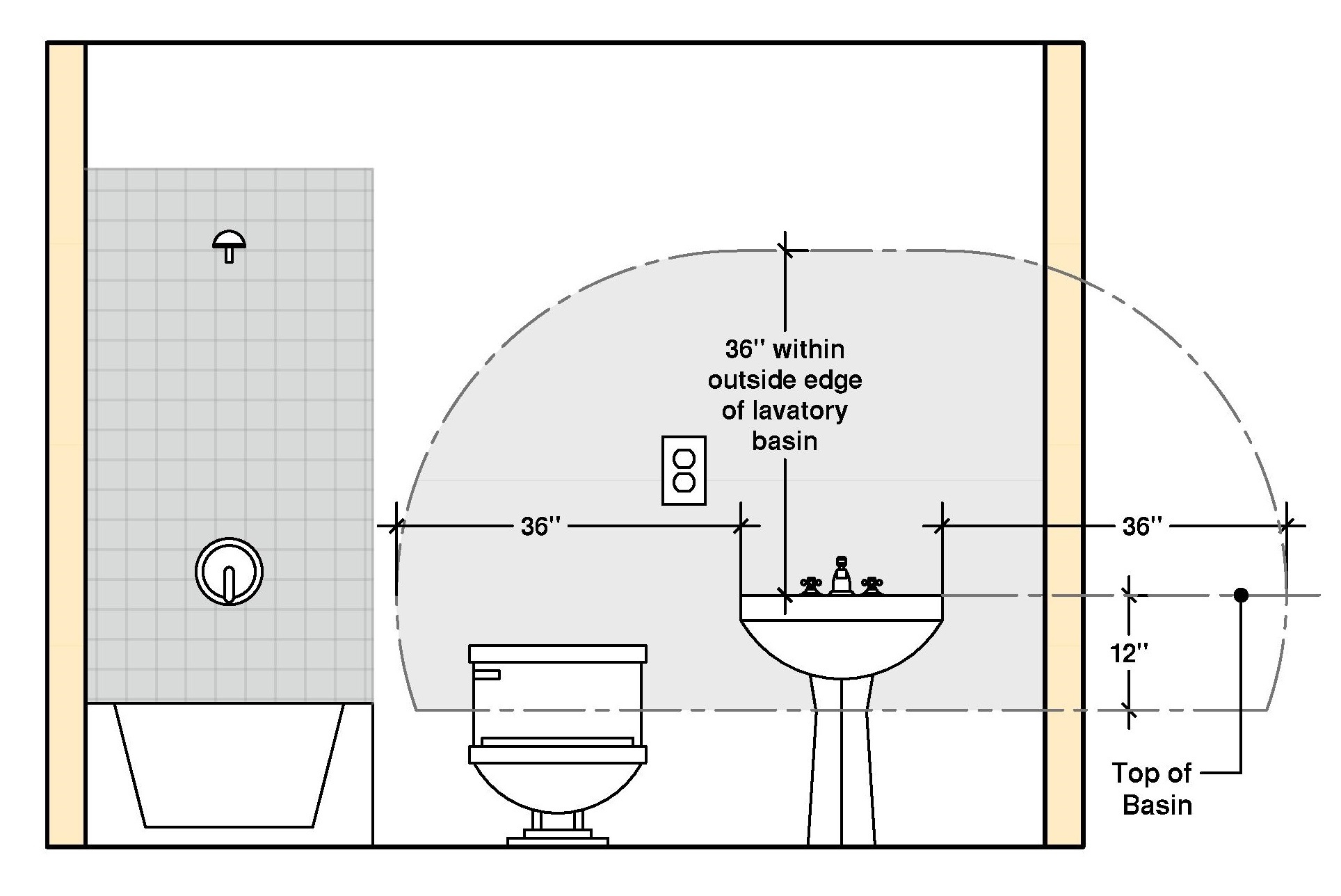Bathroom Vanity Outlet Height Standards and Regulations

Ensuring the proper height for bathroom vanity outlets is crucial for both safety and functionality. Building codes and safety guidelines provide recommendations to ensure outlets are positioned at an accessible and safe height. This article delves into the standard height recommendations for bathroom vanity outlets, considering different types of vanities and the potential consequences of incorrect installation.
Standard Height Recommendations for Bathroom Vanity Outlets
Building codes and safety guidelines generally recommend a minimum height of 18 inches (45.7 cm) above the finished floor for bathroom vanity outlets. This height ensures easy access and minimizes the risk of tripping hazards. The National Electrical Code (NEC) provides specific guidelines for outlet placement in bathrooms, including the minimum height requirement for vanity outlets.
Recommended Outlet Height for Different Vanity Types
The recommended outlet height may vary slightly depending on the type of bathroom vanity:
- Pedestal Sinks: For pedestal sinks, the outlet should be positioned at least 18 inches (45.7 cm) above the finished floor. This height ensures that the outlet is accessible while leaving enough space for the pedestal base.
- Double Vanities: For double vanities, it’s recommended to install outlets on both sides, ensuring that each outlet is at least 18 inches (45.7 cm) above the finished floor. This allows for convenient access to power for both sides of the vanity.
- Wall-Mounted Vanities: Wall-mounted vanities typically have a lower profile, so the outlet height can be adjusted accordingly. However, it’s still essential to maintain a minimum height of 18 inches (45.7 cm) to ensure accessibility and prevent tripping hazards.
Consequences of Incorrect Outlet Height
Installing vanity outlets at incorrect heights can lead to several problems, including:
- Safety Hazards: Outlets placed too low can pose a tripping hazard, especially for children and older adults. This can lead to falls and injuries.
- Accessibility Issues: Outlets positioned too high can be difficult to reach, especially for individuals with mobility impairments. This can make it challenging to plug in appliances or use electronic devices.
- Aesthetics: Incorrect outlet placement can disrupt the overall aesthetics of the bathroom. Outlets that are too high or too low can be visually unappealing and detract from the design of the vanity.
Factors Influencing Bathroom Vanity Outlet Height

The optimal height for bathroom vanity outlets is not a one-size-fits-all situation. Several factors contribute to finding the most convenient and functional placement, ensuring comfortable and efficient use of the vanity space.
Vanity Size and Countertop Material, Bathroom vanity outlet height
The size of the vanity and the material of the countertop play a crucial role in determining the ideal outlet height. Larger vanities with ample countertop space may allow for more flexibility in outlet placement. However, smaller vanities might require a more strategic approach to ensure the outlets are accessible and don’t interfere with the countertop layout.
The material of the countertop can also influence outlet placement. For instance, a countertop with a deep sink basin might necessitate a higher outlet placement to avoid obstruction by the sink. Conversely, a vanity with a shallow basin might allow for a lower outlet placement.
User Height
The height of the primary user of the bathroom is a significant factor in determining the optimal outlet height. A standard height for outlets is typically 18 inches from the floor, but this can be adjusted based on the user’s height.
For instance, a taller individual might prefer a higher outlet placement to avoid bending down too much, while a shorter individual might prefer a lower outlet placement for easier access.
Vanity Design and Features
The design and features of the vanity can also influence outlet placement. For example, a vanity with a built-in mirror might require a higher outlet placement to avoid obstruction by the mirror frame.
It is crucial to consider the placement of other fixtures, such as towel bars, shelves, and storage compartments, to ensure that the outlet placement does not create any obstructions or hinder the overall functionality of the vanity.
A vanity with a large, open shelf or a pull-out drawer might necessitate a higher outlet placement to prevent the shelf or drawer from blocking access to the outlet.
Best Practices for Determining Outlet Height
Here are some best practices for determining the most suitable outlet height for a specific bathroom vanity:
* Consider the User: Determine the height of the primary user and adjust the outlet height accordingly.
* Assess the Vanity Size: Evaluate the size of the vanity and the countertop space available for outlet placement.
* Account for Countertop Material: Consider the type of countertop material and the depth of the sink basin to avoid obstruction.
* Plan for Vanity Features: Factor in the design and features of the vanity, such as built-in mirrors, shelves, and drawers, to ensure unobstructed access to the outlets.
* Visualize Functionality: Imagine the use of the vanity and consider the most convenient and accessible placement for the outlets.
By carefully considering these factors, you can ensure that your bathroom vanity outlets are placed at the most suitable height for optimal functionality and user comfort.
